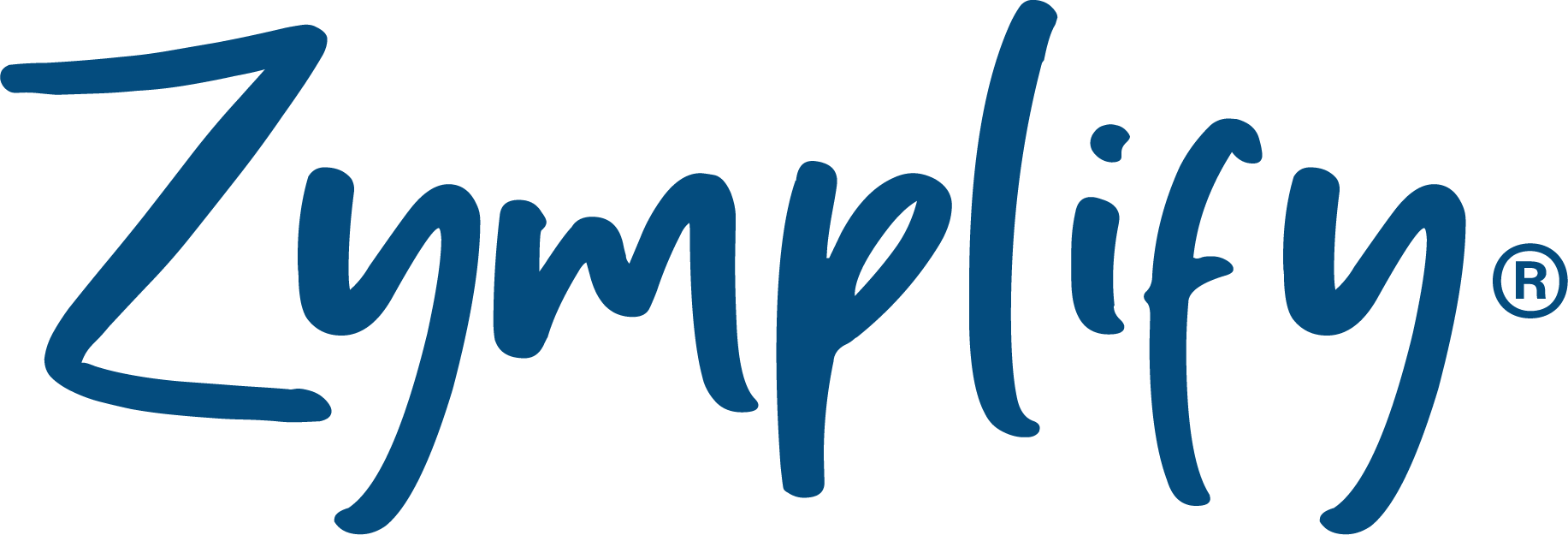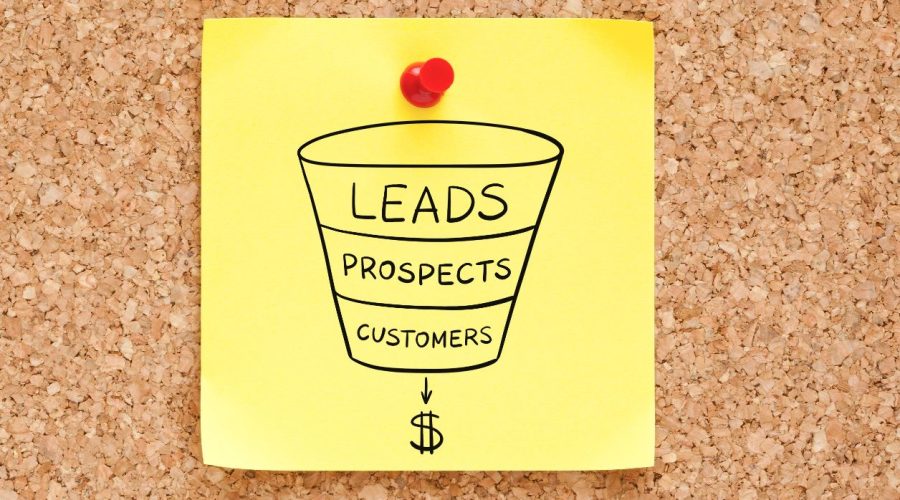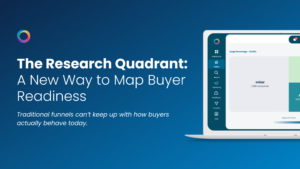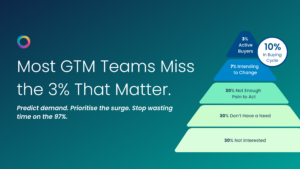Lead generation has changed dramatically with the skyrocketing use of social media. In particular, the abundance of information readily available online has led to the rise of the “self-directed buyer” and the emergence of new ways to develop and qualify potential leads.
What is Lead Generation?
Lead generation describes the process of stimulating and then capturing interest in a company’s product or service for the purpose of developing prospects ready to be part of the buying process.
Lead generation has changed dramatically with the skyrocketing use of social media. In particular, the abundance of information readily available online has led to the rise of the “self-directed buyer” and the emergence of new ways to develop and qualify potential leads.
What is a lead?
A lead is a prospective customer who has shown interest in your brand or what you offer. Their interest is expressed by sharing their contact information such as an email address or telephone number, in exchange for a piece of information.
Why is lead generation important?
Lead generation is essential for both marketing and the sales team as it helps to obtain new leads and generates the right leads. With lead acquisition, you are much more involved in inbound and outbound tactics to generate leads.
How many times have you got a cold caller interrupting your dinner? Or asking you random questions out of nowhere? Yeah, it can be really annoying! Nine times out of ten we ALWAYS hang up. With lead generation, instead of getting a random cold call from someone who has just bought a contact list, you will only contact people who actually know who you are.
You will contact those people who have already expressed some kind of interest in your business because they have opened the initial communication pathway. If you think about it, it’s kind of sneaky! By showing an organic interest in your business, these people have initiated the relationship with you. This will make it easier in the long run and much more natural for them to eventually turn into a customer.
The state of lead generation in 2019
The state of lead generation has changed significantly over recent years. The most significant change in the way consumers perceive advertisements means that companies must adapt their lead generation tactics accordingly.
Some of the biggest challenges with regards to lead generation in 2019 include:
Finding a strategy, tactic or offer that gets the attention of potential leads
Trying to come up with the right offer can be harder said than done. The offer must be tailored and specific and grab the attention of the prospect as soon as possible. The first step in this process is creating buyer personas and get to know your target audience as much as possible before creating any type of content. You need to understand their pain points, and difficulties they are facing at the minute, in order to create a tailor-made solution for them.
Demographics you need to look at include:
- Age range
- Gender
- Position/Job title
- Geographical location
- Their day-to-day tasks
- Work-related goals
- Work-related challenges
- KPIs and metrics
- Publications and media consumed
You need to focus on your prospect’s goals. If you know where they want to be, then you can create an experience that will help them get there. You’ll also be able to speak to them on an emotional level and trigger certain pain points.
Having enough people/the right people to generate leads
If you have a lack of resources and people when it comes to lead generation – you need to consider marketing automation. By automating the lead generation process, you can free yourself up valuable time that you can put back into growing your business. You can qualify more qualified leads and increase your sales process.
Marketing automation aims to bring together all of a company’s marketing requirements into a single, easy-to-use, integrated platform. It is particularly useful for SMEs and Digital Agencies, who may find it difficult to cover all their marketing bases with a limited budget and few staff.
Marketing Automation refers to the software that brings everything together. A lot of marketing departments around the world have to automate repetitive tasks like emails, social media and other website actions. Marketing automation makes this easier and could save your business money in the long run too.
Benefits of marketing automation include:
- Costs – Save money by not having to hire a team of marketing professionals
- Progress – Automatically encourage and nurture new customers
- Competition – Level the playing field between your company and larger businesses
- Insight – Use your database of collected information to improve your campaigns
- Growth – Marketing automation is scalable, flexible and can grow with your business
Measuring and documenting lead generation success
Marketing analytics is a huge trend in 2019, and it should be a critical component in your overall digital marketing strategy. Marketing experts have clearly stated in recent years – if you can’t measure it, you can’t improve it. You also can’t attribute it to a particular channel or salesperson.
With the help of tangible marketing analytics, it becomes much easier to analyse the progress of your lead generation efforts as well as make informed decisions, in real time. You’ll also be able to see what’s working and what’s not.
Some important metrics to measure includes:
- Click-through rate (CTR)
- Conversion rate
- Time to conversion
- Cost per click (CPC)
- Cost per lead
- Return in investment (ROI)
Top best B2B lead generation strategies in 2019
Chatbots
A chatbot is a fantastic lead generation strategy in 2019 as it can…
- Ask your visitors what they’re interested in, and direct them to the relevant section of your website
- Ask your visitors if they’d like a trial or product demo
- Ask your visitors what stage of their Buyer’s Journey they’re at (whether they’re still researching options, or if they’re ready to make a purchase)
- Recommend your visitor a product or pricing plan based on their needs
Gated content
Gated content that is of high value, such as whitepapers, eBook and extensive guides, is a fantastic opportunity to generate leads. If the user feels like they would gain value from your piece of content, they will hand over their contact details and effectively become part of your database. However, it must be useful content, with an engaging and eye-catching landing page.
Guest blogging
You can request to offer a blog to a popular website that attracts your target audience. If you know where your buyer personas hang out online, then get in front of them with an engaging blog post that will add value.
Guest blogging is a great way to push your brand and get your organisation in front of an already highly engaged audience.
Native content
Also known as sponsored content, native content will give you further opportunities to get your brand in front of a targeted audience. A huge benefit of native content is that it’s more overtly promotional and may be beneficial for generating leads in the short term. With native ads, you are front and centre.
Video marketing
Video is prioritised on all social media platforms over any other form of content and converts more leads when used on landing pages. It is the future of the internet and you should be including it in some form in your lead generation strategy.
Video content will improve your SEO efforts, increase conversion rates and more. If you create attention-grabbing content that will encourage people to sign up to find out more information, you should increase your lead generation strategies.
Facebook Ads
People spend a significant amount of their day scrolling on social media – especially Facebook. Facebook Ads are an effective way to get in front of your target audience when their enjoying some downtime. If your ads are eye-catching and stand out from their normal, mundane newsfeed, you’re sure to convert more leads. As the numbers show, Facebook ads are a definitive way to get a great return on your marketing investment and gather high quality leads.
Retargeting
Have you ever been on a website and looked at a particular product, for it to follow you around when you’re browsing another website? That’s called retargeting and it works really well as part of your lead generation strategy.
retarget marketing works by placing a small pixel of code on your website that attaches a cookie to every user who visits the site. When they browse the web elsewhere, that cookie triggers your ads. This means only users who have already been to your site and left will see the ads.
How to move your leads through your sales funnel
Top of the funnel
Your goal: Keep them coming back.
People can’t buy from you if they don’t know you exist. They won’t buy from you if they don’t trust you.
You need to get your name out there and establish your business as an industry leader.
The most common awareness stage tactics for attracting new prospects and establishing authority are:
- Blogging
- Social networking and publishing
- Pay per click campaigns
Middle of the funnel
Your goal: Get their email address.
Once someone has become familiar with your business, engage them. Encourage them to make small commitments to your business even before they’re ready to purchase.
The best way to do this is to offer a lead magnet which helps solve their problems in exchange for their email address.
To engage your crowd, use the following methods:
- Landing pages
- Call to actions
- Forms
Bottom of the funnel
Your goal: Make the sale
It’s time to make the ask. The average customer needs to be offered the sale SEVEN times before they’re ready to purchase!
Give your customer clear opportunities to purchase and do it often.
You can make the sale by using these strategies:
- Social monitoring
- Automated journeys
- Chat bots
Other factors to consider when trying to generate high quality that will convert
Optimise your website and page design
Web design matters more than you might think, as does the speed of your site. Based on the collected data, Google determined that website visitors make their first impressions of a site’s attractiveness within 1/20th of a second. Furthermore, “visually complex” sites were consistently interpreted as less beautiful.
Simplifying your design can help keep your visitor focused on the content that matters.
Try different form styles
Forms often become a stopping point for consumers. They don’t want to take the time to fill in the fields.
You can reduce friction by eliminating unnecessary form fields, turning fields into checkboxes or other elements, and enabling autofill. However, you also need to test.
Run A/B testing using the collected data
Once you’re armed with recordings and data, you can run A/B tests to see what works the best for your audience. Create two versions of the same landing page, for example, and alter one variable such as the CTA, colour scheme or image and see which works better.
Use testimonials to build trust
Adding testimonials to your website can build trust and loyalty. Social proof, including testimonials, puts consumers at ease.
More from Zymplify
Top Inbound Marketing Tools to use in 2019
Inbound Marketing and Marketing Automation
The Power of Inbound Marketing: Are You Really Using it Effectively?




